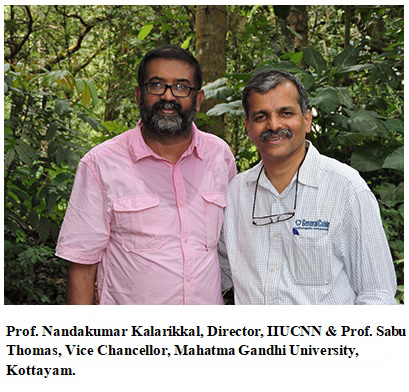 How often have you encountered a flattened tyre while negotiating a rough road? Did you then earnestly wish for better and tougher tyres?
How often have you encountered a flattened tyre while negotiating a rough road? Did you then earnestly wish for better and tougher tyres?
Nanotechnology has come has a helping hand. A technology for tough inner liners for high performance tyres developed by the University Center for Nanoscience & Nanotechnology (IIUCNN) of Mahatma Gandhi University may soon be granting your wish to avoid such flat tyre incidents.
The formulations for the inner liners are armed with enhanced gas barrier property using nanoclay and functionalized nanoclay systems which toughen the inner liners significantly. IIUCNN has patented the technology in collaboration with Apollo Tyres and the company will soon use the technology for rolling out its high performance tyres.
Supported by the Nano Mission of the Department of Science and Technology (DST) IIUCNN promotes and coordinates interdisciplinary research programs in nanoscience and nanotechnology leading to the technological development and fabrication of nano-devices. The areas of focus of such research are healthcare, automobile, aerospace and defense applications.
 The centre is working on multiple technologies like toughened nanostructured epoxy blends which are used for interior applications as well as the high-performance properties needed in high temperature / high humidity environments in aerospace applications;water purification membranes using nanocellulose filters, electromagnetic shielding compositions which have high electrical conductivity, excellent thermal stability, and low density, nanocellulose and nanofillers, polymeric scaffolds for wound healing, wearable devices that can detect strain, electro spun porous membranes as battery separators. It has also developed a formulation for high voltage cables with General Cables, USA.
The centre is working on multiple technologies like toughened nanostructured epoxy blends which are used for interior applications as well as the high-performance properties needed in high temperature / high humidity environments in aerospace applications;water purification membranes using nanocellulose filters, electromagnetic shielding compositions which have high electrical conductivity, excellent thermal stability, and low density, nanocellulose and nanofillers, polymeric scaffolds for wound healing, wearable devices that can detect strain, electro spun porous membranes as battery separators. It has also developed a formulation for high voltage cables with General Cables, USA.
DST’s support has equipped the centre with sophisticated instruments like Transmission Electron Microscopy (TEM- useful for high magnification images of the internal structure of a sample in nanolevel) which helped the scientists at the centre capture nanostructured morphologies clearly and tune its end functional properties by varying the size and dimension of the fabricated nano particles.
With such sophisticated equipment support the team of scientists at the centre led by Dr Sabu Thomas is toiling to overcome challenges like dispersion of nanofillers such as nanoclay, carbon nanotubes and graphene or its analogues in polymer matrices for developing functional polymer nanocomposites. They have used chemical modifications of nanofillers for effective dispersion of such nanofillers in polymeric systems to make end functional products.
IIUCNN works in collaboration with industries and R&D sectors of the country and abroad by providing consultancy services and research projects in nanoscience & nanotechnology. Apart from being a centre of educational excellence for students and researchers it has established strong collaborations with foreign Universities and institutes. The centre also gives focused attention on Social, Ethical, Legal and Environmental (SELE) issues related to Nanoscience & Nanotechnology
focused attention on Social, Ethical, Legal and Environmental (SELE) issues related to Nanoscience & Nanotechnology
for policy making.
Their close collaborations with industries has helped them translate their research findings into useful products that can be of use for the common man, in filing joint patent applications for the final product and subsequent technology transfer.
The team firmly believes that nanotechnology has the potential to place the country in the forefronts of the technological advancement in the future and many cutting edge products can be formulated with the help of nanotechnology. They are working hard towards that goal with dreams in their eyes.






























